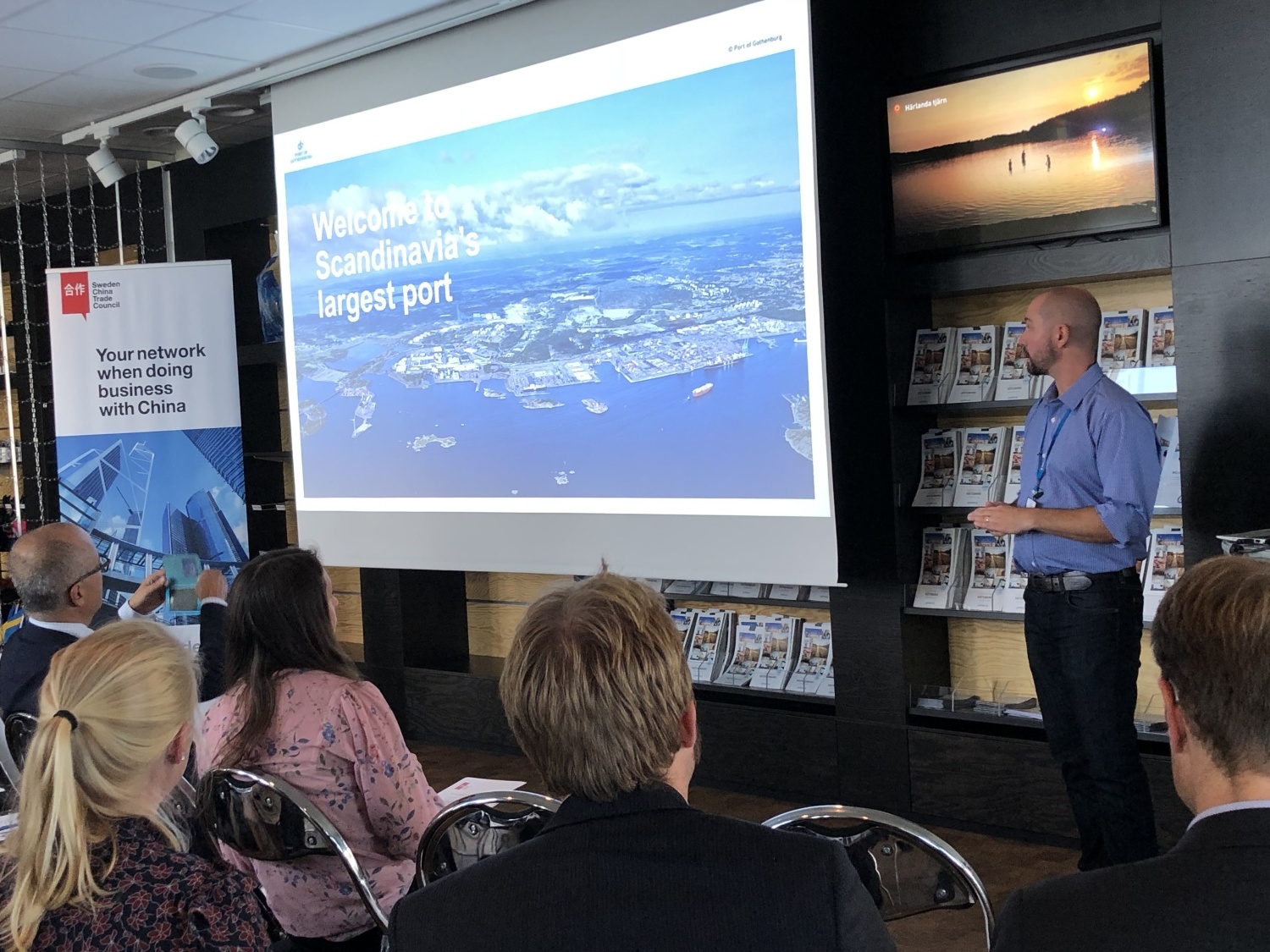
Growth and investments in the Port of Gothenburg and political infrastructure initiatives makes for an exciting future in Sweden’s second largest city, Gothenburg.
The massive Chinese investments and global infrastructure programs makes it important for Swedish companies to follow how different political initiatives affect global logistics. This was the topic of the day during a lunch seminar earlier in September, which SCTC hosted together with Scandinavia’s largest port, the Port of Gothenburg. SCTC board member and Head of Communication, Stefan Lundin, and Public Affairs manager Jens Larsson, gave a presentation of how the Port of Gothenburg is investing for the future, and how that future might look in the light of both the Chinese BRI and the European TEN-T-initiatives.

The Port of Gothenburg is undergoing massive upgrades with deepening of the fairway, new terminal builds, as well as logistics parks in the vicinity and supporting infrastructure with railways and other transport solutions. Some 8 billion SEK is being invested in the port during the coming years. The Port of Gothenburg is often seen as an temperature indicator of the Swedish economy and the industry follow volume reporting closely. Currently the trends are all positive and growing, with more and more logistics customers finding their way to the port. About a third of all transports through the port is related to China and Asia.
The Trans-European Transport Network, or TEN-T for short, is not widely known outside of outside of EU: s infrastructure circles but it is an important policy. The ultimate objective of TEN-T is to close gaps, remove bottlenecks and eliminate technical barriers that exist between the transport networks of EU Member States. The policy seeks to achieve this aim through the construction of new physical infrastructures; the adoption of innovative digital technologies, alternative fuels and universal standards; and the modernising and upgrading of existing infrastructures and platforms. In short, the policy has in short enabled infrastructure co-operation across national borders something that has always been difficult.
The Belt and road Initiative (BRI) bears similarities with the TEN-T, especially regarding the objective of constructing a transport network that transcends national borders. The possibility of connecting TEN-T and BRI gives way for an interesting future and is something that policy officers working with the two policies should keep in mind. It could strengthen the transport corridors connecting Europe and China.
For more information, please contact Stefan Lundin, Head of Communication, Port of Gothenburg, stefan.lundin@portgot.se.
© Artikelförfattaren och Sweden-China Trade Council. Vid återgivning ska alltid källan anges.